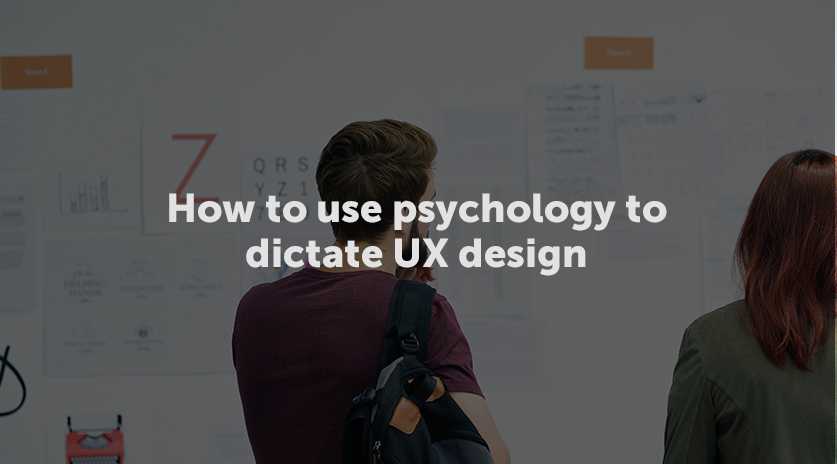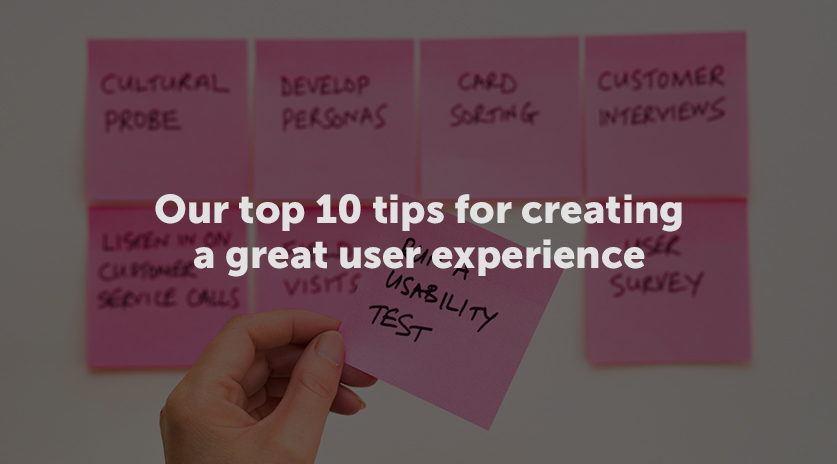As mentioned previously, we’re on a mission to rid the web of bad User Experience (UX). UX is a buzzword you might have heard as it is bandied around the web. It may confuse you in terms of how it relates to your business, so we wanted to highlight some common UX questions we get asked regularly.
What Is UX?
According to the Nielsen Norman Group (A UX research company) the simplest explanation of UX is:
“User experience” encompasses all aspects of the end-user’s interaction with the company, its services, and its products.
So from a website design point of view, it is the experience your user goes through when they interact with your website.
For a deeper understanding of UX and how it affects your business website, take a look at our detailed post ‘What is UX Design?’ which clarifies this question.
What Is User-Centric Design?
User-centric design, also often referred to as user experience design (or development), is the process in which the end user is given precedence over anything else when designing an interface.
In simple terms, the website or interface (software) is designed in such a way that it provides the best experience for the end user, following a deep understanding of who that end user is, how they will be using the interface, and what their objectives are in relation to the interface.
The usual design process includes an analysis of the target audience or user design of the website, evaluation of the design and finally implementation.
What Is An Avatar/ Target Audience?
An avatar, also known as your target audience, is the person who will potentially be using your website.
This persona needs to be identified before any UX design or web development work takes place, as they are the people you will be designing your website for.
User-centric design cannot take place when you have no idea who the end user will be for your website or software interface, hence this step is essential to success in creating UX design that resonates with your target audience.
What Is A User/Buyer Journey?
This is the journey your user goes through on your website to reach a particular objective. This objective is identified through careful analysis of your customer avatar, their pain points and the solutions they are looking for from your business.
This information is then used to design journeys on your website that enable these objectives to be achieved in the most efficient and quickest way possible.
What Is The User Goal Of The Website?
The ‘User Goal’ is the overall goal your end user would like to achieve from visiting your website. This is usually outlined at the buyer journey or customer avatar stage and can be implemented as ‘calls to action’ on your website.
The way to achieve this in the best light possible is to connect it with your business goals. That way it would be a win: win situation for both parties.
For example if you are a gym owner or personal trainer and your goal is to achieve more subscribers (so you can follow up with them to make an offer for your services) and you identify that the end user who is your ideal customer is looking to gain more information about getting fit for their wedding, you may create a small video series that can help them tone up their body in time for their big day as well as meal plans that can keep them on track.
This information can be offered to them on your website as gated content i.e. they would have to swap their email address to receive the information.
This not only helps them get the information they need to solve their pain or problem but also allows you to grow a relevant subscriber list that can potentially be interested in a more personalised service from you.
Is UX The Same As Web design?
Web design and user experience design are two different things. Most people understand what the first one is, the latter not so much.
Firstly, web design only applies to one platform, the web. User experience design can be applied to many more platforms including software, desktop technologies, mobile apps and much more, because UX starts with the end user and not the technology being used.
Web design also involves HTML, CSS and Java script knowledge (plus others), however, UX is about designing interfaces that start with the end user in mind. This involves much more interaction with end users through surveys and interviews, for example, rather than the just the technical knowledge of designing the website.
If we were to use an analogy to describe web design and UX design it would go a little like this:
Imagine a supermarket. Web design would be the aesthetically pleasing façade with amazing signs and doors that look beautiful when looked at from the outside. UX design would be how easy it is to find the right groceries in the right place with well laid out aisles that have labels to show you where to go, whether the staff was helpful, and if they had convenient facilities inside such as a café and toilet facilities.
Hopefully the above explains the difference between the two terms so you can see why both are important for your website.
If I Already Have An Aesthetically Pleasing Site, Why Should I Invest In UX?
An aesthetically pleasing website doesn’t mean that it is the most user-friendly option.
Even though UX is more analytical and technical in nature and UI (User Interface) refers to the design or look of the interface, it’s fair to say that both are required for the end user to gain the best experience on your website.
If one is missing i.e. good UX with no UI, or good UI with no UX, your website user will not be provided with the best experience, which of course is not good for business.
Why Bother With UX? What Benefit Does It Have For My Business?
Good UX is all about enhancing user satisfaction when they interact with your website. The aim of good UX is to make the complex easier for the end user, and if done right it can mean more (satisfied) customers for your business.
The simplest way to explain the benefits of good UX for your business is with another analogy:
Company A sells a widget at a cheap price but has awful customer service, a difficult website to navigate, and a clunky payment page which doesn’t confirm whether your payment has been accepted or not and no after sales care.
Company B sells the same widget at a higher price but the order process is seamless, they provide multiple payment options and also have a 60-day no quibble guarantee. They also have a landline number you can call with award-winning customer service should you have any problems.
Which company would get more business? Company B of course.
Company A is bad UX.
Company B is great UX.
The above principles can be applied to your website design too in the form of user-centric design.
We hope that the above FAQ helps clarify why UX is essential for your website and your business, should you have any further questions you can always contact us to speak with a specialist.


